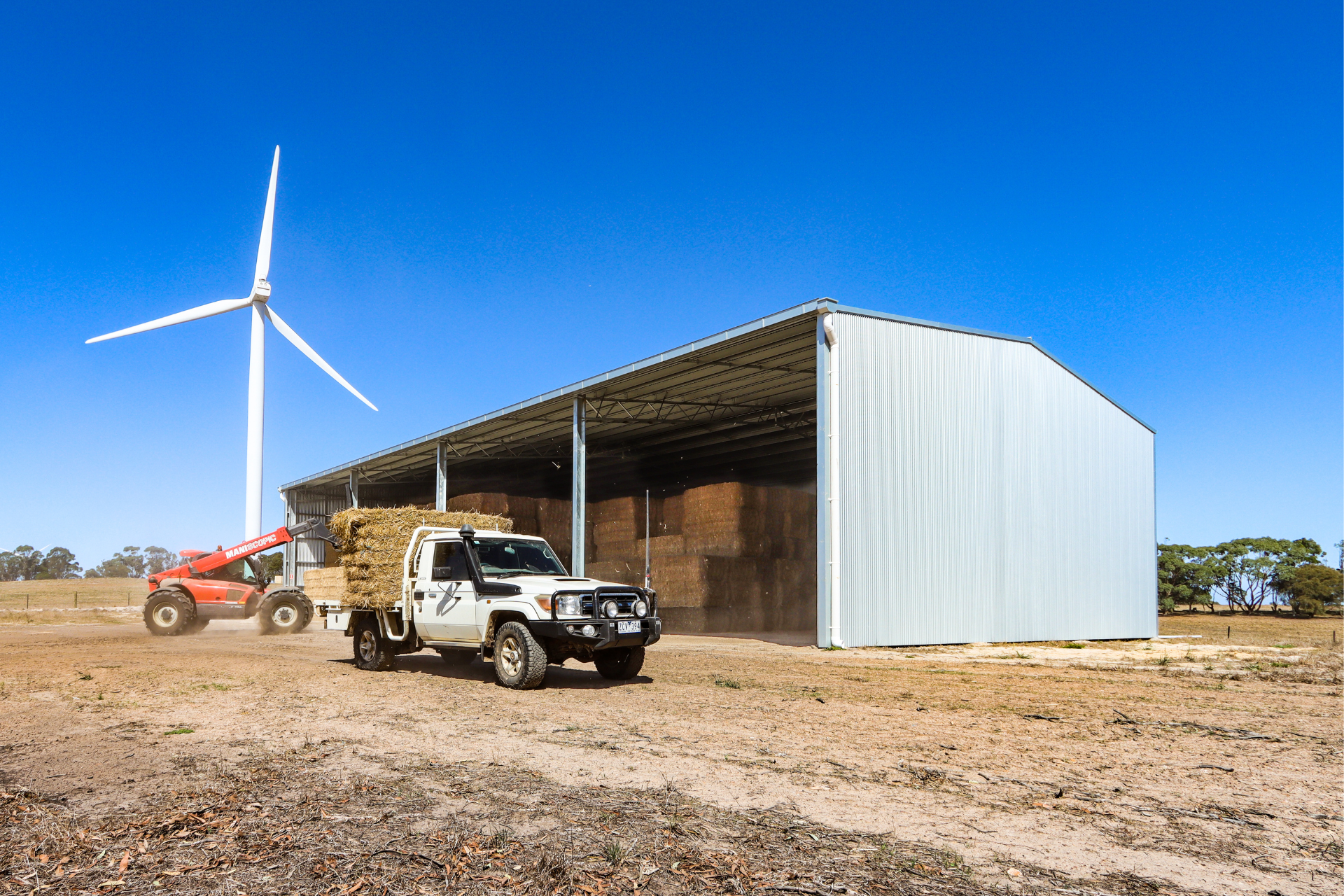The best way to stack the hay in your hay shed is to stack it safely.
Choose the right stack formation.
The right stack formation like a stepped face can help ensure the stack stays stable.

While it may be quicker to stack bales directly on top to create a block formation, taking the time to stack the bales so that they are stepped keeps the stack stable and helps prevent hay bales collapsing.
Only stack your hay bales as high as your equipment allows.
For example, a front-end loader can stack 6 big square bales high. Stacking any higher increases the risk of unstable hay bales which becomes a safety issue, particularly if machinery operators are inexperienced.
Also, keep in mind the condition of the bales when loading the shed.
Leave a gap between stacks to allow for airflow.
Good airflow around the bales helps prevent mould growth and heating of the bales. Having room between each stack of hay also makes it easier to test the hay helping to reduce the risk of spontaneous combustion and providing peace of mind.

We recommend bay spacings of 8 metres – 8.5 metres for hay sheds so that there is adequate room between stacks.
Cover the floor of your shed
Use a tarp or leave a layer of residual hay on the ground to cover the floor of your shed before stacking your hay. Residual hay or a tarp acts as a barrier between the floor of the shed and your hay helping to protect and maintain the quality of the bottom layer of hay.
Raise the stack
Use a raised storage pad or pallets to stack your hay on. Having you hay bales raised up off the ground helps water drain away from the bottom bales.
Ensure the shed pad is properly prepared
A compact and level shed pad with easy access is essential. A level site with clear, easy access will help ensure the haystacks are stable and the shed can be loaded safely.
Monitor stacks for movement
Monitor your hay stack for any bale movement, particularly if some bales have been unloaded. Monitoring the stacks of hay for bales that have moved helps prevent any bales from falling which pose a significant workplace hazard and risk.







